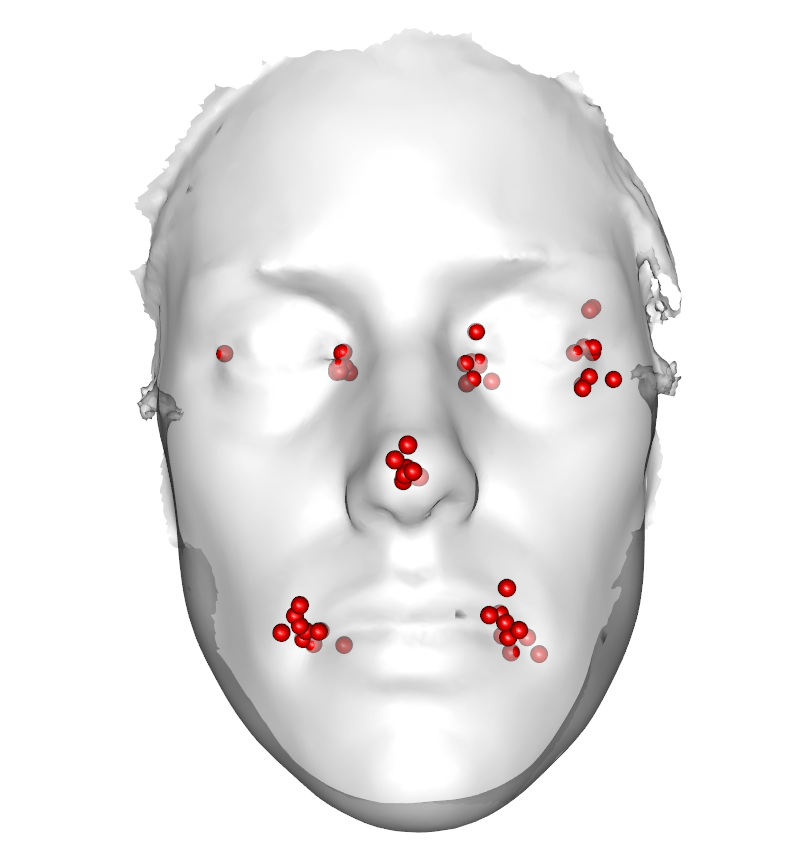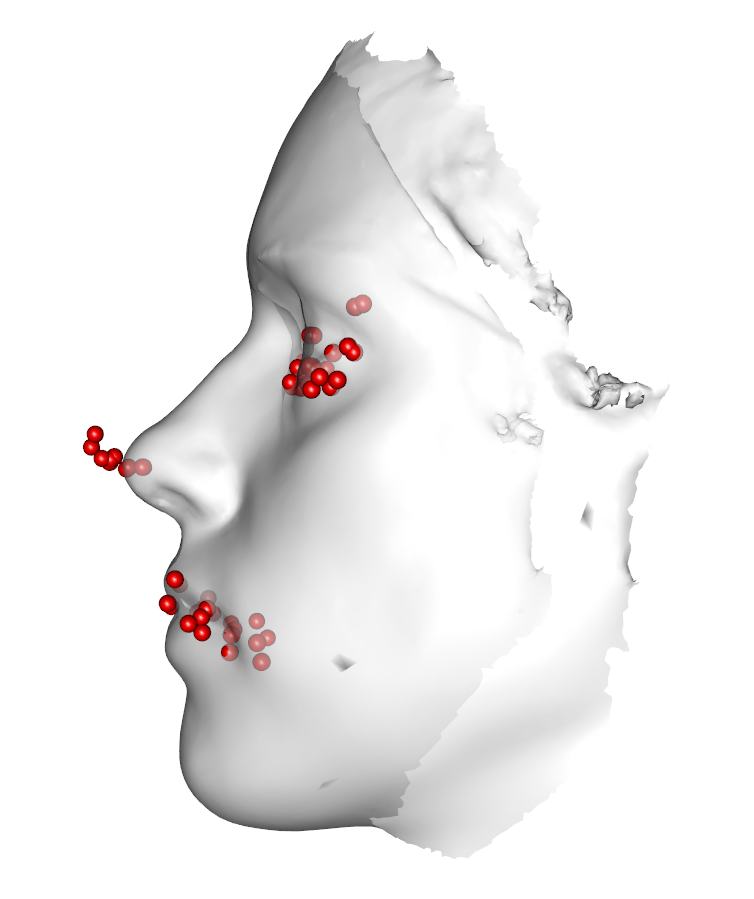RvtkStatismo: Updates
08 Oct 2015Newly motivated by the nice SHAPE symposium in Delemont, I started showing some love to RvtkStatismo: statismoConstrainModel now accepts per coordinate noise values (only spherical at the moment). Additionally, there is a new function called vtkTriangulate that creates an isosurface (as mesh3d)from a (binary) image file and vtkMeshWrite can optionally write ASCII vtk files. All this is accompanied by some bugfixes I found along the way.
##Example
Here is an example of the effects, when assigning landmark specific noise values to constrain a model:
require(RvtkStatismo)
require(Rvcg)
require(mesheR)
require(rgl)
data(humface)
# Create a model
hummodel <- statismoModelFromRepresenter(humface,kernel=list(c(80,50),c(20,40)))
noise <- (0:6)*10 #create an increasing amount of noise
GPmodConst <- statismoConstrainModel(hummodel,humface.lm,humface.lm,ptValueNoise = noise)
##now look at the sampled landmark variability (extracted from sampled surfaces via mesheR::transferPoints)
for(i in 1:10) {
tmpsamp <- DrawSample(GPmodConst)
spheres3d(transferPoints(humface.lm,humface,tmpsamp),col=2,radius=2)
}
In Figure 1 and Figure 2 we can see how the variability of sampled surfaces (shown only at the landmark location is directly affected by the choice we make at each landmark (especially at the right eye were noise is set to zero).

